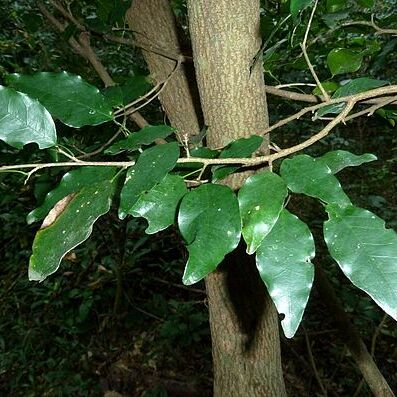Inflorescence a lax terminal or axillary raceme, or this often condensed to an axillary fascicle which may be reduced to a solitary, apparently axillary, flower; bracts small (up to c.5 mm) but distinct in lax inflorescences, or sometimes clearly replaced by 2 separate or fused stipules, or not obvious in fasciculate inflorescences; bracteoles linear to suborbicular, immediately beneath the flower or distant from it, sometimes both on one side of the pedicel and fused at the base or not.
Petals white or purplish-pink, with a yellow blotch at the base of the standard; standard broadly ovate to suborbicular or reniform, with the claw very short or absent, apex emarginate; wings with a claw, oblong to narrowly obovate; keel petals with a claw, incompletely fused along their dorsal margins.
Calyx at anthesis splitting to the base either down one side only (spathaceous) or down both sides (i.e. splitting into 2) and usually splitting at the apex into 2–5 teeth, the whole persistent or caducous, sometimes shed by means of a horizontal split just above the base so that a small ring remains.
Leaves unifoliolate; leaflet with entire margin, rarely cordate at base; petiole with upper and lower pulvini, these occasionally contiguous and so appearing as one; stipules caducous.
Pods linear-oblong to oblanceolate, often strongly curved near the apex, laterally compressed, greyish or straw-coloured to purplish or black, sometimes pubescent.
Stamens 10, free; filaments glabrous or occasionally hairy; anthers dorsifixed.
Shrubs, sometimes scrambling or climbing, or trees up to 20(25) m high.
Seeds reddish or blackish, ± laterally compressed, with a small hilum.
Ovary subsessile, glabrous to velutinous, with a long curved style.
